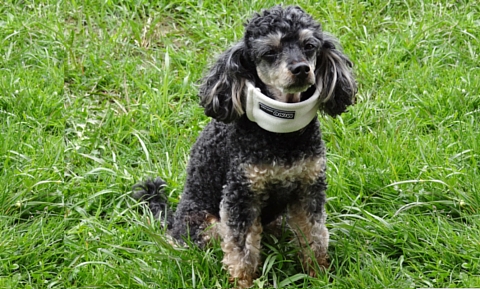
Pets are such important parts of our lives and families, it is important to know basic first aid principles for your dog, in order to be prepared in the event that an unexpected accident or illness occurs. Much like children, dogs are can be inquisitive, clumsy, put things in their mouths that they shouldn’t, and sometimes, are just in the wrong place at the wrong time. Medical emergencies can happen quickly and without warning, so it is best to be prepared for any situation.
Some common medical emergencies that your dog could encounter include bodily injuries, allergic reactions, stomach and digestions issues, heat stroke, seizure, breathing difficulties, poisoning, and heart failure, just to name a very few. The basic purposes of first aid are to preserve life, reduce pain and discomfort, and to minimize the risk of permanent damage or disability. In a medical emergency, you should be prepared to administer first aid for your dog, contact your veterinarian for medical advice and to inform them of the situation, and then bring your pet to the clinic or emergency hospital as quickly as possible.
Speak to your vet about the pet first aid courses that are available in your area. Many standard first aid training services offer pet-focused courses, and often animal- based organizations will offer specialized first aid courses as well. These courses will teach you to safely and effectively provide a wide range of emergency first aid techniques specific to domestic animals. However, remember that first aid treatment is not a substitute for proper veterinary care, although it very well may save your pet’s life until you can obtain proper medical treatment. Any first aid or emergency situation should always be immediately followed by a trip to the veterinarian for a thorough examination and proper course of treatment.
In the event of an emergency, remember these basic first aid principles:
- Remain calm; animals can pick up on human emotions, and it is important for you to stay calm and collected when facing an emergency situation with your pet. Your dog is probably in pain and frightened, and is relying on you to take charge.
- Assess the scene for any further threats to your dog’s wellbeing.
- Provide basic first aid, as the situation dictates.
- Keep your dog warm, and quiet, and keep movement to a minimum, especially if they are injured.
- Contact your vet’s office to obtain medical advice and let them know you are on your way there, so they are ready for you.
Most homes are equipped with a basic first aid kit and supplies, and much of it can be used for animals, with the exception of things such as pain relievers (Tylenol, etc., which should never be given to dogs) and Band-Aids (those can stick to fur and be difficult to remove- it is best to use gauze to wrap wounds and secure with adhesive tape). If you are very active outdoors or travel a lot with your dog, it’s a good idea to have an emergency first aid kit for your pet to take with you on- the- go.
Basic supplies to include in a pet first aid kit are:
- Latex gloves
- Gauze- pads and rolls
- Adhesive tape
- Non-stick bandages, that stick to themselves, not to fur or skin
- Alcohol wipes
- Saline solution
- Hydrogen peroxide
- Non- prescription antibiotic ointment
- Tweezers
- Scissors
- Eyedropper or syringe
- Splint
Depending on your pet’s specific needs and your lifestyle, you may need to add custom items to your kit; i.e. for a diabetic dog, you may need to include something sweet to help with low blood sugar, or if they are allergic to bees, have an extra Epi-Pen. If your dog takes any regular medications, have a backup supply in your kit. You should also include your vet’s contact info, so it is easily accessible in an emergency situation. Copies of your pet’s medical records should also be included, in the event that an emergency happens while you are out of your area, and need to seek veterinary care from a different clinic.
Being prepared and knowledgeable about first aid for your pet can make all the difference in an emergency situation. Take the time to learn practical skills and have accessible supplies, and you will be very glad you did if you ever need it!